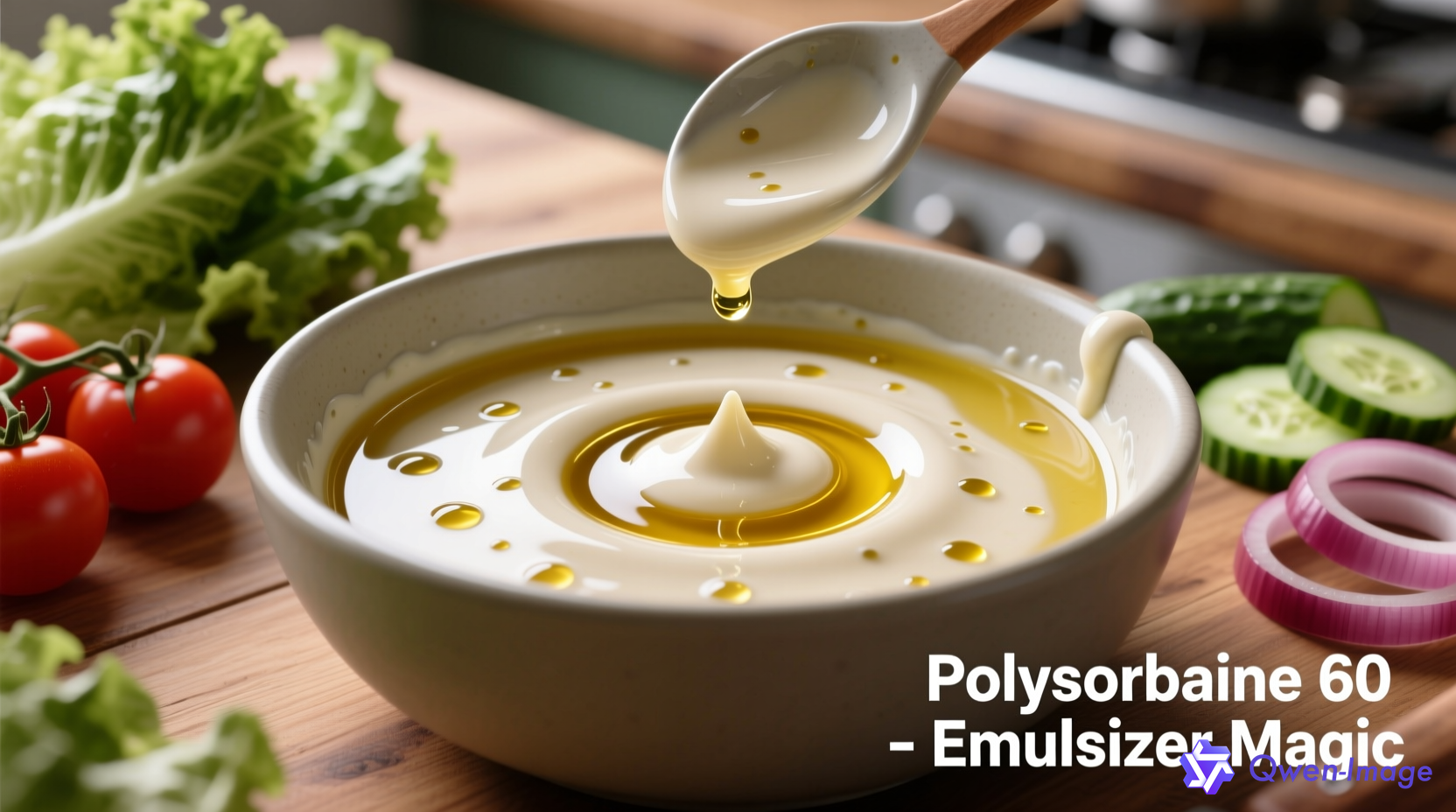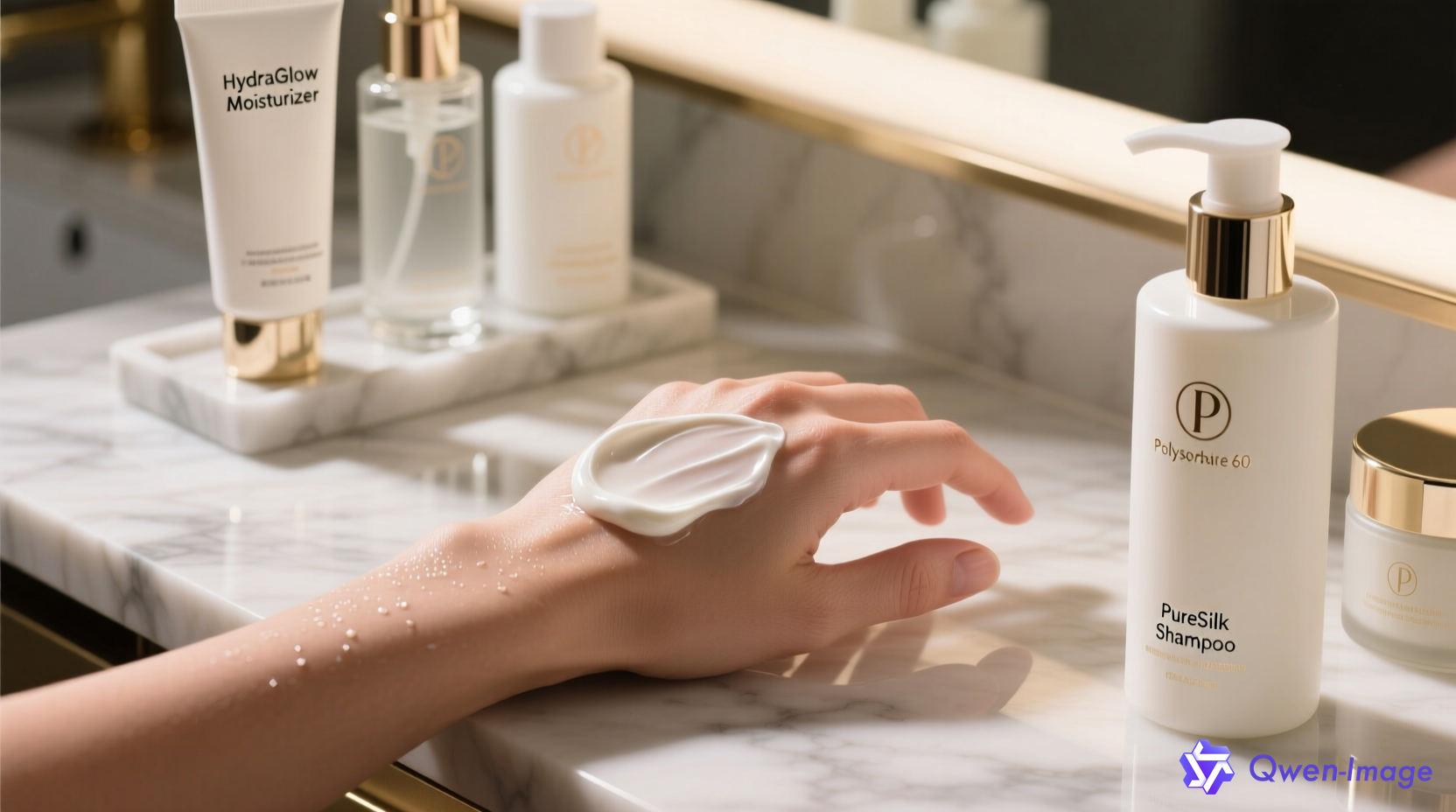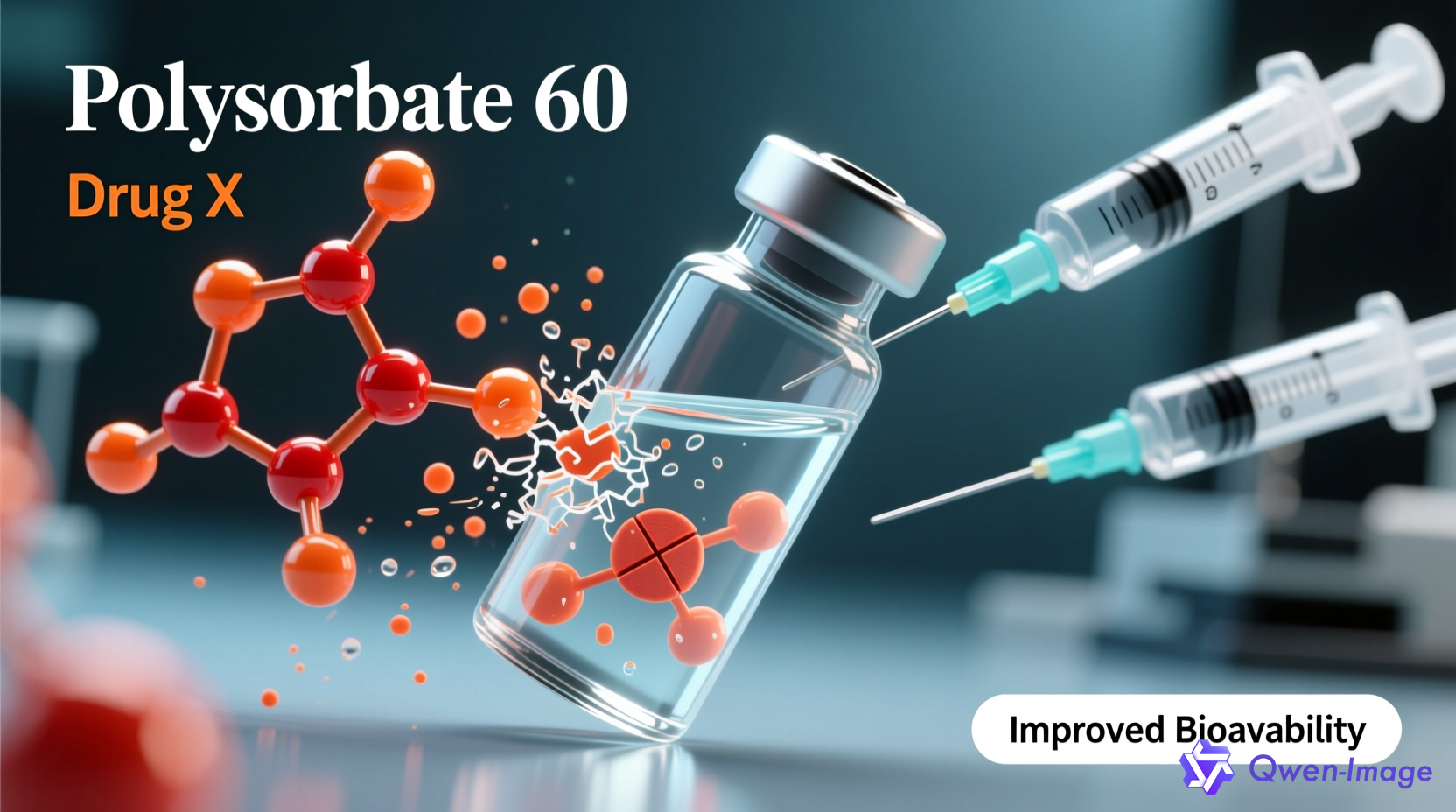Introduction to Polysorbate 60
Polysorbate 60 stands as a cornerstone ingredient in modern manufacturing, playing a pivotal role as a high HLB (Hydrophilic-Lipophilic Balance) emulsifier. Its primary function is to create stable oil-in-water emulsions, which are essential across a wide range of sectors, from the food we consume daily to the personal care products and pharmaceuticals that enhance our health and well-being. This versatility makes it an indispensable component in countless formulations, driving innovation and quality in industries worldwide. As consumer demands for better texture, longer shelf life, and enhanced efficacy continue to grow, understanding the fundamentals of Polysorbate 60 becomes crucial for manufacturers and end-users alike. In this article, we delve deep into its properties, applications, and best practices, providing a comprehensive guide for anyone involved in product development or sourcing.
What is Polysorbate 60?
Polysorbate 60, chemically known as Polyoxyethylene (20) sorbitan monostearate and commonly referred to as Tween 60, is a non-ionic emulsifier derived from the ethoxylation of sorbitol followed by esterification with stearic acid. This semi-synthetic compound typically appears as a viscous, amber-colored liquid or semi-solid, with a characteristic mild odor. Its high HLB value of approximately 14.9 categorizes it as an ideal emulsifier for oil-in-water systems, where it facilitates the mixing of hydrophobic and hydrophilic components that would otherwise separate. The ’60’ in its name denotes the specific fatty acid used—stearic acid—which influences its solubility and performance. Beyond its emulsifying capabilities, Polysorbate 60 exhibits excellent dispersing, solubilizing, and stabilizing properties, making it a multifunctional additive in various formulations. Its production involves careful chemical processing to ensure purity and consistency, often starting from natural sources like vegetable oils or animal fats, but resulting in a synthesized product that meets stringent industrial standards.
Chemical Composition and Key Properties
The chemical structure of Polysorbate 60 consists of a sorbitan backbone ethoxylated with approximately 20 units of ethylene oxide, esterified with stearic acid. This configuration grants it amphiphilic characteristics, meaning it has both hydrophilic (water-attracting) and lipophilic (oil-attracting) parts. Key properties include its solubility in water, alcohols, and oils, which allows it to act as an effective surfactant. It has a density of about 1.06-1.09 g/cm³, a boiling point above 100°C, and is stable under normal storage conditions. The HLB value of 14.9 is particularly significant, as it indicates a strong affinity for water, making it superb for creating emulsions where oil droplets are dispersed in a continuous water phase. Additionally, Polysorbate 60 is non-ionic, meaning it does not carry a charge, which reduces the risk of interactions with other ionic compounds in formulations. This neutrality contributes to its broad compatibility with various ingredients, enhancing its utility in complex mixtures. Its ability to lower surface tension and form micelles enables it to encapsulate oils, improving product homogeneity and performance.
Regulatory Status and Safety (E435)
Polysorbate 60 is recognized as a food additive under the code E435 by international regulatory bodies such as the Codex Alimentarius and the European Food Safety Authority (EFSA). In the United States, it holds Generally Recognized as Safe (GRAS) status by the Food and Drug Administration (FDA) when used within specified limits, typically ranging from 0.1% to 1.0% in food products, depending on the application. Extensive toxicological studies have confirmed its safety, showing no significant adverse effects at recommended doses. For instance, the Joint FAO/WHO Expert Committee on Food Additives (JECFA) has established an acceptable daily intake (ADI) of 0-25 mg/kg body weight, underscoring its low toxicity profile. In cosmetics and pharmaceuticals, it is approved by agencies like the European Medicines Agency (EMA) and the Cosmetic Ingredient Review (CIR), which have evaluated its non-irritating and non-sensitizing properties. However, as with any additive, it is essential to adhere to Good Manufacturing Practices (GMP) to prevent impurities like 1,4-dioxane, which can form during production. Overall, Polysorbate 60’s regulatory endorsements provide confidence in its safe use across industries, supported by decades of application and research.
Key Applications of Polysorbate 60
The multifunctional nature of Polysorbate 60 enables its widespread use in diverse sectors, each leveraging its emulsifying, stabilizing, and texturizing properties to enhance product quality. From improving the mouthfeel of baked goods to ensuring the efficacy of pharmaceutical drugs, its applications are vast and critical. In the following sections, we explore its roles in food, cosmetics, and pharmaceuticals in detail, highlighting specific examples and benefits that make it a preferred choice for formulators. Understanding these applications not only showcases its versatility but also helps industries optimize their formulations for better consumer outcomes.
Enhancing Food Texture and Stability
In the food industry, Polysorbate 60 is primarily used as an emulsifier to prevent the separation of oil and water phases, thereby improving texture, stability, and shelf life. For example, in baked goods like bread, cakes, and cookies, it helps retain moisture by forming a stable emulsion with fats and water, resulting in a softer crumb and extended freshness. This is particularly important in commercial baking, where products must withstand transportation and storage without becoming stale or dry. In salad dressings and sauces, Polysorbate 60 ensures a homogeneous mixture, preventing oil from rising to the top and maintaining consistency with each use. Ice cream and dairy products benefit significantly from its ability to control ice crystal formation; by emulsifying fat globules, it creates a smoother, creamier texture that enhances the sensory experience. Additionally, in chocolate and confectionery, it prevents sugar bloom—a whitish coating caused by moisture—by stabilizing the fat phase, thus preserving visual appeal and quality. The use of Polysorbate 60 in food not only meets consumer expectations for superior texture but also aligns with industry trends toward clean labels and natural ingredients, as it can be derived from plant-based sources. 
Creating Superior Cosmetic and Personal Care Products
In cosmetics and personal care, Polysorbate 60 serves as a key emulsifier that blends oil and water-based ingredients, ensuring product stability, smooth application, and improved sensory attributes. It is commonly found in creams, lotions, and moisturizers, where it helps maintain a uniform consistency, preventing phase separation and extending shelf life. For instance, in facial creams, it enhances spreadability and absorption, leaving the skin feeling soft and hydrated without greasiness. In shampoos and conditioners, it aids in dispersing oils and active ingredients, improving cleansing efficiency and imparting a silky feel to hair. Makeup products like foundations and eyeshadows rely on Polysorbate 60 for even pigment distribution, resulting in flawless application and long-lasting wear. Beyond emulsification, it can act as a solubilizer for fragrances and essential oils, ensuring they are evenly dispersed throughout the product. The non-irritating nature of Polysorbate 60 makes it suitable for sensitive skin formulations, and its compatibility with other emulsifiers like fatty alcohols allows for customized textures. As the cosmetics industry shifts toward sustainable and ethical practices, Polysorbate 60’s potential for plant-based sourcing aligns with consumer preferences for natural and safe ingredients. 
Ensuring Efficacy in Pharmaceutical Formulations
In the pharmaceutical sector, Polysorbate 60 plays a critical role in enhancing the solubility, stability, and bioavailability of active pharmaceutical ingredients (APIs). It is widely used in oral medications, where it helps dissolve poorly water-soluble drugs, facilitating better absorption in the gastrointestinal tract and improving therapeutic outcomes. For topical formulations like creams and ointments, it ensures even dispersion of active compounds, maintaining consistent efficacy and skin penetration. In injectable drugs, Polysorbate 60 acts as an emulsifier and stabilizer, preventing aggregation of proteins or other sensitive molecules, which is vital for safety and potency. For example, in vaccines and biologics, it can protect APIs from degradation during storage and administration. Its ability to form micelles allows it to encapsulate hydrophobic drugs, increasing their solubility in aqueous environments. This is particularly important in pediatric and geriatric medications, where precise dosing and ease of administration are crucial. Regulatory compliance is paramount in pharmaceuticals, and Polysorbate 60’s GRAS status and approvals from agencies like the FDA and EMA make it a reliable excipient. Moreover, its use in combination with other emulsifiers can optimize drug delivery systems, contributing to advancements in personalized medicine and targeted therapies. 
Formulating with Polysorbate 60
Effective formulation with Polysorbate 60 requires an understanding of its synergistic relationships with other ingredients and adherence to best practices for usage and storage. This section provides practical insights for manufacturers, covering common pairings and guidelines to maximize performance and safety. By leveraging its high HLB properties in combination with low HLB emulsifiers, formulators can create robust emulsion systems that meet specific product requirements. Additionally, proper handling and storage ensure the longevity and efficacy of Polysorbate 60 in various applications.
Synergistic Pairings with Low HLB Emulsifiers
Polysorbate 60 is often used in tandem with low HLB emulsifiers to achieve balanced and stable emulsions. For instance, when combined with Sorbitan Stearate (Span 60), which has an HLB of about 4.7, it forms a synergistic blend that enhances emulsion stability in products like creams and lotions. This combination allows for the creation of water-in-oil or oil-in-water emulsions with improved texture and resistance to temperature changes. Fatty alcohols such as cetyl alcohol or stearyl alcohol are also common partners; they contribute to the viscosity and moisturizing properties of the emulsion while Polysorbate 60 handles the emulsification. In food applications, pairing with monoglycerides or lecithin can improve aeration and foam stability in whipped toppings and desserts. The key to successful formulation is calculating the required HLB for the oil phase and adjusting the ratio of emulsifiers accordingly. For example, a typical blend might include 2-5% Polysorbate 60 with 1-3% of a low HLB emulsifier, depending on the specific oil used. Experimentation and testing, such as conducting stability studies under accelerated conditions, are essential to optimize these combinations for each product type.
Best Practices for Usage and Storage
To ensure optimal performance, Polysorbate 60 should be used within recommended dosage limits, typically ranging from 0.1% to 5.0% based on the application, as per supplier guidelines. Overuse can lead to issues like excessive foaming or changes in product viscosity, so it’s advisable to start with lower concentrations and adjust based on empirical data. During incorporation, it is best added to the water phase at temperatures between 40-70°C, with gentle stirring to avoid air entrapment. For storage, Polysorbate 60 should be kept in a cool, dry place away from direct sunlight and moisture, ideally at temperatures below 25°C. Original containers should be tightly sealed to prevent oxidation or contamination. In formulations, conducting compatibility tests with other ingredients is crucial to avoid interactions that could compromise stability. Additionally, manufacturers should monitor for potential impurities like 1,4-dioxane and ensure compliance with regional regulations, such as California’s Proposition 65, which may require labeling if trace amounts are present. Regular quality checks and adherence to GMP help maintain the integrity of Polysorbate 60 in end products, supporting consistent quality and safety.
Why Source Polysorbate 60 from FoodEmul.com?
At FoodEmul.com, we pride ourselves on being a trusted supplier of high-purity Polysorbate 60, catering to the diverse needs of the food, cosmetics, and pharmaceutical industries. Our commitment to quality is reflected in our rigorous testing protocols, which ensure that every batch meets international standards for purity and safety. We offer competitive pricing without compromising on excellence, backed by a reliable supply chain that guarantees timely delivery. Our technical support team provides expert guidance on formulation and regulatory compliance, helping customers optimize their products for maximum performance. Whether you require bulk orders or customized solutions, we offer free samples and detailed technical data sheets to facilitate your decision-making. By choosing FoodEmul.com, you gain a partner dedicated to innovation and customer satisfaction, empowering you to excel in your market with confidence.
Conclusion
Polysorbate 60 is an indispensable emulsifier that drives quality, stability, and performance across a multitude of products, from everyday foods to life-saving pharmaceuticals. Its high HLB value, safety profile, and versatility make it a valuable asset in formulation science. As industries evolve toward more sustainable and consumer-centric practices, the role of Polysorbate 60 is set to expand, supported by ongoing research and innovation. At FoodEmul.com, we are dedicated to providing top-tier ingredients and partnerships that help our customers navigate these changes successfully. By understanding and leveraging the properties of Polysorbate 60, manufacturers can create superior products that meet the demands of today’s discerning consumers, ensuring a brighter future for all stakeholders involved.

